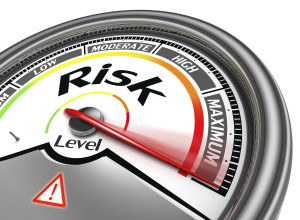AARP Hearing Center
Are You a Risk-Taker? Don't Be Fooled by Bull Market
By Allan Roth, March 5, 2015 05:00 AM
I’ve filled out more than a few risk-profile questionnaires over the years. These forms are supposed to measure how much investment risk you’re comfortable with, such as what percentage of your portfolio should be in risky stocks versus low-risk bonds. Every questionnaire I’ve ever done has pegged me as a living-on-the-edge kind of guy who should have between 70 percent and 91 percent of my money in stocks or stock funds. And that’s the problem.

In reality, only 45 percent of my money is in stock and stock funds, and that’s not likely to change. I think there are three huge problems in these profile methodologies that are responsible for the disconnect between questionnaires and reality. And that’s why you shouldn’t rely on them to set your allocation.
To get started, take this short seven-question profile from Vanguard, which shouldn’t take more than 30 seconds. While the Vanguard risk-profile survey is one of the best I’ve seen, even this one illustrates the inherent problems:
Problem 1: Willingness to take risk is not stable.
These questions ask how we feel about a risk/reward trade-off. There is a fair amount of research that shows that investors tend to think they are risk-takers in good times, like now, only to head for the hills after the market plunges. I took this Vanguard questionnaire when the stock market was near an all-time high. I’ve studied behavioral finance for more than a decade, and I’m not so sure I would have answered the question the same way six years ago, in March 2009, when markets bottomed.
Problem 2: Your ability to rebalance is affected by your target allocation.
Another question tests whether you’ll sell riskier assets during market declines and invest the money in safer assets. I answered this question truthfully, which was that I wouldn’t. Painful as it was, I rebalanced a couple of times during the market plunge of 2008-09 by buying more stocks.
Even though I had less than half of my assets in stocks, it was still hard psychologically to buy stocks. There is no doubt in my mind that if I had been 70 percent in stocks, as recommended by this questionnaire, I wouldn’t have had the courage to risk the little I had left in fixed income. Daniel Kahneman, who won the Nobel Prize in economics for his work in prospect theory, illustrated that we get far more pain from losing a dollar than pleasure from gaining one. Because rebalancing is so critical, I tend to work with my clients to set a more conservative allocation they will stick with, rather than a more aggressive allocation they won’t.
Problem 3: Failing to analyze the need to take risk
Becoming the richest person in the graveyard isn’t my key financial goal. Because I live fairly frugally, am a saver, and have invested with focus and discipline, I now have very little need to take risk. As I see it, as long as the U.S. government survives, I can likely support the desired lifestyle for my family with U.S.-backed instruments such as certificates of deposit and U.S. Treasury bonds. I define financial wealth in terms of time, not money, meaning one can be really rich with less money .
What this means for you
Most firms that sponsor these risk-profile questionnaires say the results are meant only to start a conversation and not to be taken as an absolute. I agree. My advice is to really examine how you feel about risk and try to imagine what your life would be like if stocks were to lose more than half their value, as they have done twice now over the past 15 years. Would you be able to buy stocks when they have a half-off sale? Chances are, you could be overestimating your willingness to take risk, having been lulled into that mind-set by the raging bull market of the past six years. You may want to have more boring bonds now.
>> Get discounts on financial services with your AARP Member Advantages.
If you are fortunate and now have enough money to live on for the rest of your life, then consider taking some risk off the table. The world is, and always has been, risky. Certainly, the recent events in the Middle East, Ukraine and cyberspace aren’t making it any less so. When setting an asset allocation, it is important to strike the right balance of risk based on need and expected return. Make sure you set an asset allocation you can stick to and avoid the very human irrational behavior of performance chasing.
I hope that being the richest person in the graveyard isn’t your goal, either.
Photo: Donskarpo/iStock
Also of Interest
- Getting Real About Fund Fees
- Top 10 Movies for Grownups of 2014
- AARP Foundation Tax-Aide: Get free help preparing and filing your taxes
- Join AARP: savings, resources and news for your well-being
See the AARP home page for deals, savings tips, trivia and more.































































